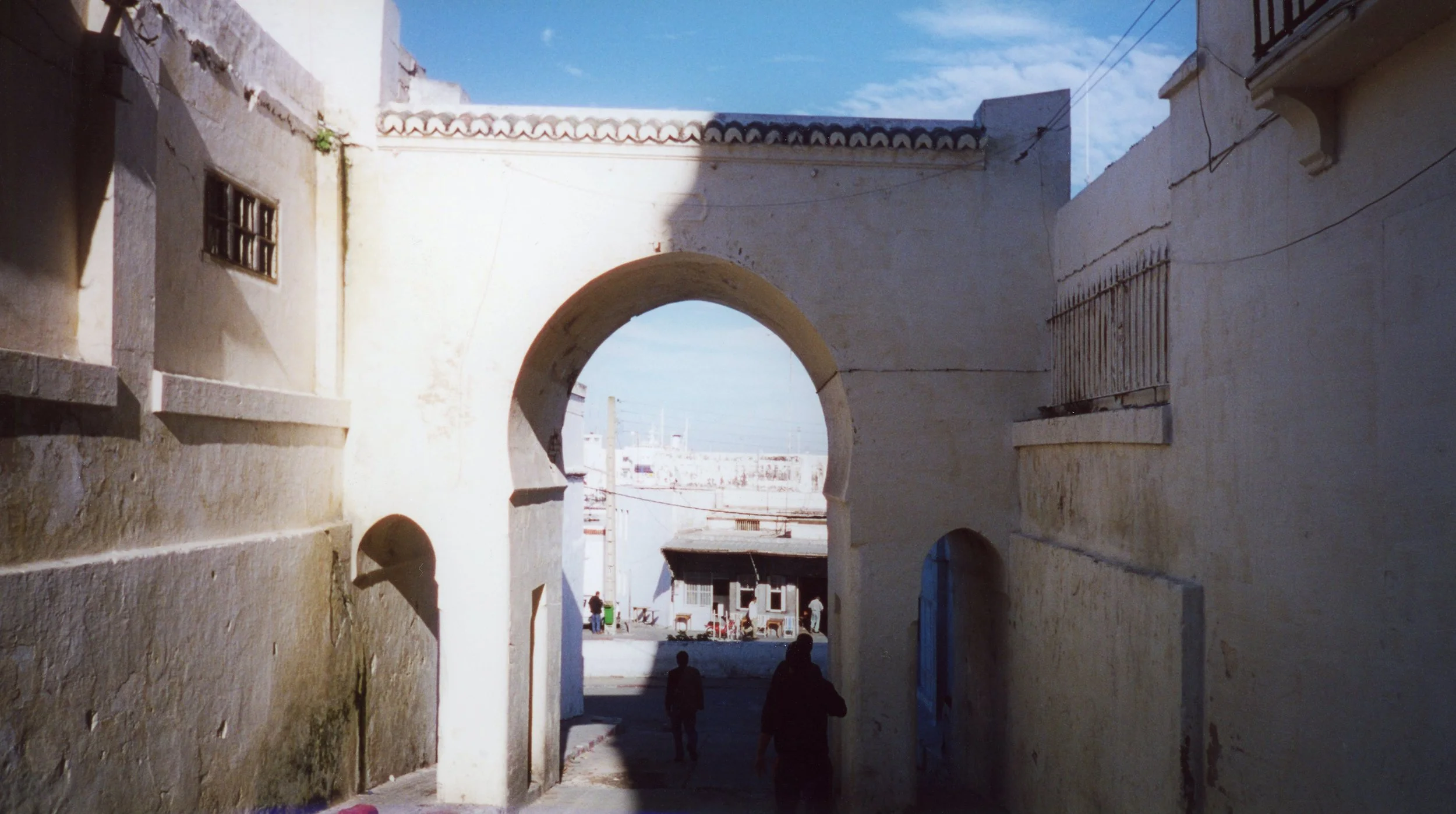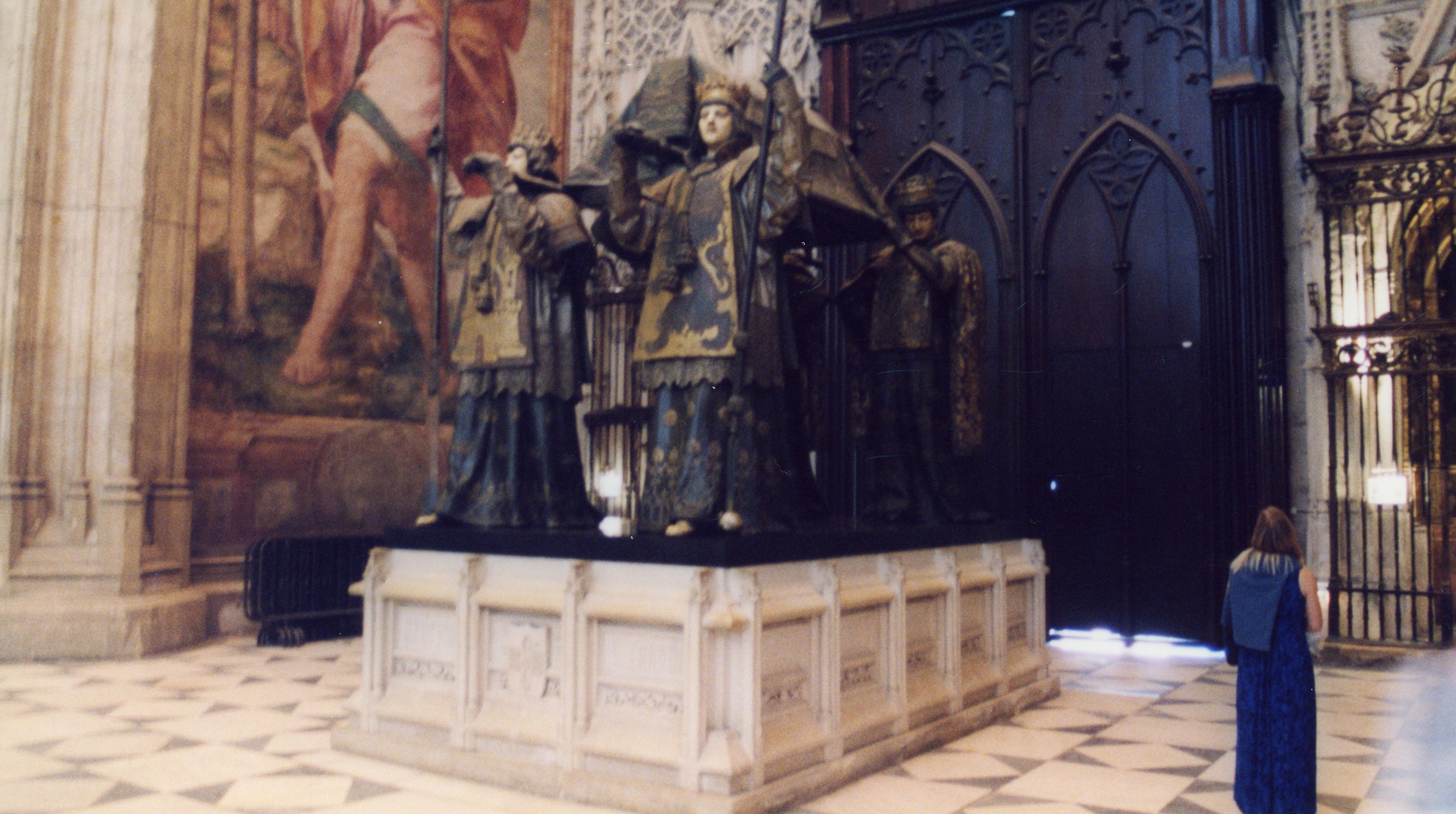
Page 4 of 5
Tangier, Morocco
In the end what you don't surrender, well the world just strips away
I had made a decision, a simple plan to travel overland from Granada to Algeciras, then take a two and a half hour ferry across the Straits of Gibraltar to the most accessible port in Morocco- Tangier. There I was to enjoy a short day trip, dodge guides and return via one of those frequently scheduled ferries back to Europe and Algeciras and my scheduled night train to Madrid. Such a simple, well thought out plan.
It went wrong from its start, as is always the case with such simple plans. The promised, frequently schedules ferries aren't that frequent or even scheduled on a late October weekday, and those that do run are frustratingly late. With my time short in Morocco, I relented to a guide upon arrival, a guide named Sharif (yes, he didn't like it when we rocked the casbah). He promised a reduced trip that featured rooftop views, shortcuts through back alleys and visits to carpet and antique and spice shops, primarily for the bakeesh, something of which my faithful guidebooks warned me. I stood my ground and bought no carpets, but was in much less of a good position on my way out of the port. Knowing the time difference and travel distance and what time I needed to leave so that I could comfortably pick up my luggage and make my night train made me realize that the prospects of getting that exit stamp on my passport and that place on a ferry in time were becoming increasingly dim. I willfully allowed myself to fall victim to the various available expeditors who did little or nothing, yet still failed my goal and ended up missing my promised night train in Algeciras by less than five minutes.
At the time I was angry, I distinctly remember writing "sucks" after Tangier in every instance I could find in my guidebook. Time has mellowed me somewhat, at least regarding that. A simple victim of too much ambition and not enough time, I never gave Tangier and Morocco a chance.
Below are two (or one) picture(s) of Algeciras, rooftops and attennae and distant seas all under African skies. Sharif told me not to take pictures of anyone (he thought it wasn't kosher), which begins to explain the pictures of rooftops and attennae and distant seas.
A healing sunset as Morocco fades away from the back of my just-a-little-too-late ferry.
From my unexpected overnight stay in Algeciras, Sevilla was only two trains and a layover in Bobadilla away. Wrested from the control of the Moors long before Granada, the once conquered city retains a charm and graciousness unlike any other place I have been. A place where you find yourself lost (both figuratively and literally) in its disorientating streets- a collection of well placed details right down to its impossible geometric paving.
The third largest Christian Church in existence, Santa Maria de la Sede doesn't really feel all that big. There's no one big interior view, no one place where you find yourself magnificently insignificant, no one place where the laws of perspective are taught once again. Ornate altars block these views at every turn, each one screaming to receive more attention than its foolish neighbors. None of these gilded distractions benefit the cathedral's permanent residents, guys like Christopher Columbus who five hundred years after finding the Caribbean and being blamed and credited for more than any one man ever deserves, just wants to find a little rest.
The most famous landmark in Sevilla is the cathedral's (now) faithful Giralda tower. The massive cathedral itself was built atop the site of Sevilla's central mosque, yet its defining minaret was saved and converted to the church's new defining bell tower. It was not necessarily happy with such a sudden change, for some 650 years ago the top collapsed and eventually a new Christian top was built. It is this unintentional collaboration seen throughout Sevilla that has come to define it, surviving pieces of a great Moorish kingdom reclaimed for a new god, surviving pieces of a once great empire constantly bleeding through the surviving pieces of yet another once great empire.
From inside the bell tower, where the views across Sevilla are nothing compared to the fear that one of those big ass bells just might start clanging.
Inside the bowels of the cathedral, well maybe not its bowels as much as its ribcage, where yet again the inherent basic coolness of uplighting and all it represents is proven one more time.
The rooftop of the cathedral with all those trees (and Sevilla) not that far behind.
The man who started and ended it all, or at least parts of it. Inside this box is whatever is left of Christopher Columbus, or, more accurately, whatever is left of what is believed to be Christopher Columbus. Many of his sailings left from Sevilla, not on the sea but connected via a sheltered and broad river. Columbus may have returned to Barcelona, but he left from here. Old habits die hard, he was well traveled in death as well- he died in the Caribbean and was buried on Santo Domingo, and then was moved (not far) and buried again in Haiti, and then finally ended up here, a good fifteen feet above the ground, never to be one with the earth he seeked again.












